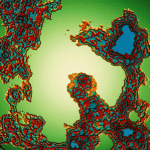Pain affects one’s mood, memory, relationships, and overall quality of life. Chronic pain can cause frustration, depression, anger, social isolation, anxiety, poor sleep, and other health risks. Fifty percent of older adults who live on their own and 75-85 percent of the elderly in care facilities reportedly suffer from chronic pain.
This survey—a collaboration between Care By Design and Project CBD—sought to answer several questions: How satisfied are patients with cannabis as an analgesic? How does medical marijuana compare to other pain management approaches, in particular, opiates? How do the most common pain management therapies compare in terms of their impact on quality of life?
Eight hundred people, most between 50 to 70 years old, responded to the survey. Over 80 percent reported that they were suffering from chronic pain; close to half reported suffering from acute pain.
A significant decrease in opiate usage among elderly patients on cannabis therapy was the study’s most notable finding. Over half of respondents reported that they had used both cannabis and opiates for pain management. Of this subgroup, 91 percent said they used fewer or no opiates after beginning cannabis therapy. Sixty-three percent said that they went off opiates altogether.
Other Key Findings
- A striking number of patients (around half) reported that opiates had a negative impact on overall wellbeing, and resulted in worsening mood, energy, functional ability and sleep.
- Cannabis was the only therapeutic approach for which there were no reports of worsening pain. In contrast, surgery, exercise, and nerve blockers benefited some but resulted in increased pain in a significant minority of survey participants.
- There were no significant differences in outcomes for patients using plant-derived high THC products compared to whole plant CBD-rich products; both types of cannabis were found to be highly effective in managing pain.
- The most common method of cannabis administration was vaporization, which is generally a safe mode of administration—barring additives and thinning agents that can be found in low quality vaping products.
According to this patient survey, cannabis therapy appears to be an effective pain management tool with few negative side effects. Patient-reported outcomes of cannabis’ efficacy together with its low side effect profile suggest that it should be considered as a first-line treatment for pain and/or as an adjunct treatment to opiates rather than as a medication of last resort.







